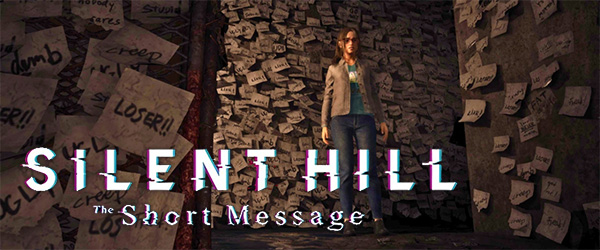
Silent Hill: The Short Message is a first-person horror game about wandering through looping, decrepit hallways in an abandoned apartment building, while confronting a secret, repressed guilt. And stop me if you've heard any of this before.
Silent Hill used to be a series that innovated, that pushed the envelope. The first game basically introduced the video-game-playing public to the concept of psychological horror. The second polished the formula to introspective perfection, while also providing a template for a plot twist that would be repeated in (what feels like) every horror game since -- at least the ones not named Resident Evil. Even action-oriented games like Dead Space ripped off Silent Hill 2.
Silent Hill 3 introduced gamers to a teenage girl protagonist who actually felt like a real person, instead of being a hyper-sexualized "boob ninja" in a bikini or skin-tight catsuit, while also providing jaw-dropping technical accomplishments. The moving, bleeding, living environmental textures of Silent Hill 3's Otherworld amazing and un-precedented at the time. And it's character models and lighting looked better than many games that would be released on the following generation of consoles.
Hideo Kojima's playable teaser P.T. spawned a cohort of horror games ripping off the formula of first-person looping hallway horrors, of which The Short Message is only the latest example. And heck, even P.T. was really only popularizing horror conventions that Silent Hill 4 had already started experimenting with a decade earlier.
This is a blunt and earnest depiction of teen depression, self-harm, and suicide.
The Short Message, on the other hand, is largely a retreading of horror gaming tropes that are quickly becoming tired and stale. The looping hallways were mind-blowing back when P.T. did it -- ten years ago. But I've seen it in seemingly every horror game since, from Layers of Fear to Visage to MadIson.
It isn't just general horror trends that The Short Message is retreading either. It's also invoking well-worn and frustrating habits that the Silent Hill series just refused to break in its never-ending quest to recreate the lightning-in-a-bottle that was Silent Hill 2. The character's repressed guilt being hidden from the player and revealed as a mid or late-game plot twist? Check. The person you're looking for being dead already? Check. Silent Hill acting as a purgatory that seems to be willfully trapping people until they confront and overcome aforementioned guilt? Check.
The heaviest, bluntest hammer Konami could find
One thing that The Short Message doesn't bother to copy from its ancestors is the subtlety and nuance that Silent Hill used to be famous for. The Short Message is unbelievably heavy-handed, blunt, and melo-dramatic. This is owing, in large part, to trepidation from Konami and/or developer HexaDrive about how to depict the game's subject matter: teen depression, self-harm, and suicide. It's a touchy subject, for sure. One has to give credit to Konami and HexaDrive for so directly addressing an issue that most game publishers and developers won't touch with a 20-foot pole.
HexaDrive's depiction of mental illness is not
as hopeless and fatalistic as Bloober's.
But this is also where The Short Message lands on one of its greatest strengths. It's blunt depiction of teen suicide is at least a hopeful and optimistic one -- one that is also grounded based on the very real social and technological issues that often motivate or catalyze real-life self-harm and suicide by actual teenagers. And this is not something that we should overlook in discussion of The Short Message. It's almost the polar opposite of how Team Bloober (the company that is developing the Silent Hill 2 remake) has historically treated the same topic. Bloober has always shown abuse victims as totally, fundamentally broken individuals for whom death or suicide is a welcome release that spares the world from their burden.
In contrast to Bloober, The Short Message wants depressed teens to know that they are not broken, that they can get help, and that there are people out there who care about them and would miss them and would be there for them in their times of need. The Short Message wants people to know that recognizing the red flags, and talking to the person can save their life, and that, for the depressed individual, things will get better.
If nothing else, The Short Message has its heart in the right place.
And let's face it, teenagers aren't exactly known for subtlety or nuance. Teenagers do tend to blow things out of proportion and be melo-dramatic. So it's hard for me to hold The Short Message's overly-blunt and melo-dramatic dialogue against it. Yeah it's cringe-worthy at times, but it's cringey in exactly the way that real-life teenagers are often cringey. There might also be more intentionality behind the blunt, cringey dialogue than is apparent at the surface level. Does the heavy-handed and cringey dialogue represent the literal events as they actually happened? Or are we seeing the world as the teenage character sees it? [More]
07ee844a-4982-4339-8a3d-c2ea2b7ed59f|2|5.0
Tags:Silent Hill, Silent Hill: The Short Message, Konami, HexaDrive, Masahiro Ito, Akira Yamaoka, teenager, suicide, bullying, social media, abuse, neglect, COVID-19, Kettenstadt, Germany, Silent Hill Phenomenon
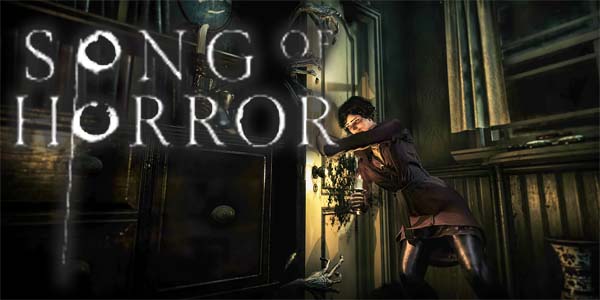
Not only is it really great to play an indie horror game that captures the slow and thoughtful nature of old-school survival horror, but it's also refreshing to play a good old fashioned gothic horror game. So many indie horror games come off as feeling a bit pretentious with their reliance on suppressed guilt twists for their psychological horror plots. Song Of Horror bucks that trend by being a straight-forward horror story about haunted houses, possessed artifacts, and otherworldly mysteries.
Song Of Horror also ups the stakes by featuring a cast of multiple playable characters, each of whom can be killed off (and removed from the rest of the story) if the player screws up. So not only do we literally not know what eldritch abomination may lie around any given dimly-lit corner, or behind any creaky old door, but if you're not careful, whatever is around that corner or behind that door might put a premature end to a given character's life and story.
Strut and fret your hour upon the stage, and then ...
Song Of Horror was originally sold as an episodic indie horror game on Steam, but the collection of all episodes was released for console as a single game in 2021. It somehow slipped under my radar until last month, when YouTube recommended a video about it by Mert Kay Kay. Each episode includes 3 or 4 playable characters to choose from, each of whom can be permanently killed off if you fail to avoid or escape from the phantasms that haunt each episode. If a character dies, all the items and notes that they've collected will be dropped on the floor at the spot of their death, and that location will be marked on the next character's map. So you don't really lose any progress if a single character dies. If you lose all the characters in a given episode, however, then it's "Game Over"!
Each episode will introduce one or more new characters, but old characters can also re-appear as playable characters if they survived the previous episode(s). Thus, losing a character in an early episode may have the longer-term consequence of reducing the player's available lives (to borrow a term from old arcade parlance) for future episodes, and reducing your margin of error.
Each episode has 3 or 4 playable characters, each of whom can permanently die.
But even if you do manage to screw up and get all 4 characters killed in any given chapter, you only have to restart that chapter. Song Of Horror won't delete your save file and force you to redo the entire game. Each chapter takes 2 -- maybe 3 -- hours to complete on a first-playthrough, and can be done in well under an hour if you know what you're doing. It's actually a loss of progress that is somewhat on par with dying in an old Resident Evil game after doing a fair chunk of exploration without backtracking to a save point.
The legitimate threat of permanently losing a character will naturally raise the stakes of the game and of the horror. It will force the player to play cautiously, to be observant of your surrounding and of context clues in the environment, to pay close attention to sounds and shadows, and to not barge through every door in a rush. In fact, it may do this more effectively than even a game like Resident Evil. Dying doesn't mean simply restarting with the same character and retrying the set piece that got you killed. Dying means permanently losing that character, and having to try again with a new character. Restarting at a checkpoint doesn't simply reset the stakes, it doubles-down on them!
Furthermore, the actual jump scares and dangers are semi-randomized. You won't necessarily encounter the same jump scare or the same monster at the same place and time in any 2 playthroughs. This also keeps things tense, because even on a replay (whether it be a whole new playthrough, or just a respawn with a different character), you can't just memorize all the places to avoid.
[More]
0ffa3716-e34f-4cd6-a026-763157eedc54|0|.0
Tags:Song of Horror, Protocol Games, Raiser Games, horror, cosmic horror, gothic horror, H.P. Lovecraft, perma-death, music, sound, light, dark, Silent Hill
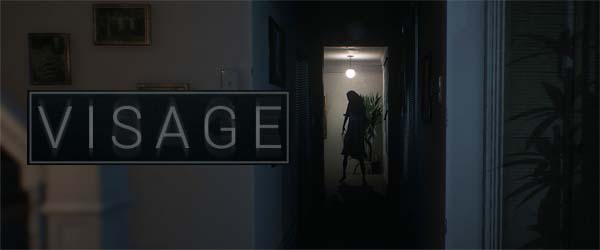
It's virtually impossible to talk about Visage without first referring back to Hideo Kojima's infamous P.T. demo for the canceled Silent Hills project. P.T. has certainly left an almost Amnesia-sized footprint on the horror video gaming landscape, and it's hard not to refer back to Amnesia when talking about any horror game in the past 10 years either. It's hard to believe that P.T. was released six years ago, and the wanna-bes, copy-cats, and attempts at a spiritual successor have been rolling in ever since. The latest indie project to try to replicate P.T.'s success is SadSquare's Visage, a first-person horror game set entirely within a single suburban house in the 1980's. With Allison Road canceled, and Konami giving us no evidence that rumors of a new Silent Hill game (or a revival of Silent Hills itself) is true, Visage is probably the closest yet to a full-fledged realization of the concepts and novelty of P.T..
P.T. has influenced an entire generation of horror games.
P.T. mixed with a little Amnesia and Resident Evil
I think that part of the appeal of P.T. was its simplicity. With that simplicity came elegance. After all, it only had like 2 buttons that actually did anything, and the whole game consisted of walking around the hallway and zooming in to look at things. That's fine for what is essentially a tech demo that only takes an hour or two to beat, but for a fully-realized, full-length game like Visage, you need a bit more substance. Visage does deliver in that regard. While the entire game could be boiled down to just wandering around a house looking at spooky things, it also has several more traditional survival horror systems, which are used in new and sometimes creative ways.
The most substantive of these mechanics is a "sanity" mechanic pulled straight from something like Amnesia or Eternal Darkness, and which replaces a more traditional health system. The ghosts haunting the house will kill you and force a Game Over if they catch you, so your only defense is to run away. But when you run away, you need to try to run into a part of the house that is well lit, as the player character seems to be very afraid of the dark, and his sanity rapidly depletes if you're standing or wandering around in the dark.
The little red brain in the corner indicates you're in
danger of succumbing to a potentially-lethal haunting.
I wish the little sanity indicator had been moved to one of the top corners of the screen. Holding certain items in your left hand (particularly the lit lighter) often covers up or obscures the icon, making it hard to read. Other U.I. elements, such as some button prompts, will also draw a black bar across the bottom of the screen, which also covers up the sanity indicator.
Visage has some pretty good lighting effects, with realistic, dynamic shadows and darkness that is actually pitch black. It's not uncommon to catch a glimpse of a shadow from a flickering or swaying light in the corner of the screen and think that it's an apparition. Unfortunately, there's also some texture pop-in when playing on my PS4 Pro that happens when making sudden turns or when moving between rooms. This also looks like an apparition, and acted to quickly desensitize me to the deliberate peripheral visual trickery that the game tried to employ later.
The ambient sound design is also quite good. There's the cliche background ambiance of a rainstorm and thunder, but it's accompanied by numerous creaks and groans within the house itself. These creaks and groans, combined with the narrow corridors, blind corners, and ubiquitous darkness help to keep the horror atmosphere tense, especially in the early hours. Are those footsteps in the attic above me? Did I just hear something behind me? Is there an apparition waiting around the corner? The groaning and creaking reminded me of the novel House of Leaves, which I read over the summer, and which describes its house as "growling" whenever it reshapes its impossible geometry.
The house of Visage is also claustrophobic enough, cluttered enough, and confusingly laid-out, such that navigating in the dark is genuinely difficult. I had to play for hours (and finish more than a whole chapter) before I really started to get a feel for the layout of the house. Remembering which rooms and objects are where is hard enough in the early hours with the lights on. Not being able to see where I'm going only made early-game exploration feel hopelessly futile -- but in the good horror game way of making me feel unsure of my surroundings and vulnerable.
The house has a surprisingly large and complicated floorplan.
Keeping it well lit will both keep you sane, and also help navigate. [More]
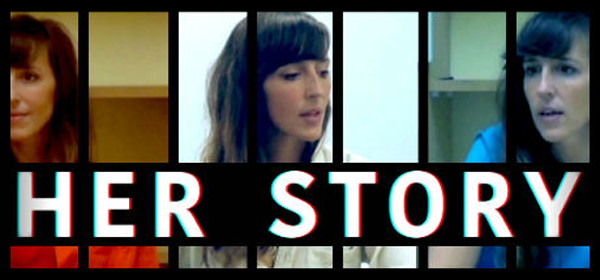
Having a little bit of free time between playing Madden 20 and starting out this year's indie football games, I checked out a couple indie games that I've had sitting around in my Steam library for months. Both are player-driven mystery games about trying to deduce the events of the past. The simpler of the two is called Her Story, which is a game that released all the way back in 2015. So I'm quite a few years late to this party.
Her Story attracted my attention because it was developed by Sam Barlow. Barlow had previously worked as a writer for Silent Hill: Origins and Silent Hill: Shattered Memories. Personally, I felt he and the other writers at Climax had butchered Origins. His work on Shattered Memories, however, which was not bound by the constraints of established Silent Hill canon, went in a more interesting direction. Maybe not as interesting as if they had gone with the initial Cold Heart pitch, but whatever. I was curious to see what Barlow would do when completely free of the Silent Hill namesake.
I was curious how Sam Barlow would handle himself when free of the Silent Hill namesake.
Down the deductive rabbit hole
Her Story stands out because it is a completely player-driven experience. You have almost free access to a database of interview answers from a woman who is a suspect in the disappearance (and murder) of her husband. The game consists of searching through a series of live-action videos of interview questions, in which every word of her answers have been indexed for search. The catch is that you can't simply watch all the clips in order, and the game will only give you (at most) the first five clips at a time (in chronological order). You also don't know what questions are being asked, so you don't necessarily have the context for her responses.
Each response is laden with bread crumbs of keywords that you can pick out and search in subsequent queries in order to find related videos and discover additional details about the suspect's life, the victim's life, and the events leading up to the disappearance of her husband. This is where Her Story really shines. The game starts with the word "murder" in the search bar, and each clip that you watch will reveal new names and places. This should lead you towards going down the rabbit hole of searching for each new name or place until you eventually come to the weirder and more interesting testimony.The scripts is expertly designed to distribute bread crumbs in such a way to dole out the story over the first hour or two in order to build up the mystery.
Pick out key words from her testimony to find related statements.
There's also no hand-holding or guidance of any kind. It's just you and the search engine. It's entirely up to the player to input the words you want to search for. You can follow-up on a particular clip by searching for a keyword in her response, or you can search for some completely different, random word(s) instead. The game doesn't highlight the next words for you to search. It doesn't stop to tell you that you've "solved" some mystery or completed some objective. There's a widget that shows you how much of the database you've viewed, but other than that, there is no in-game progress-tracker. In fact, there's not even a real end goal.
... [More]
4259fc7f-e8ef-49b1-8252-3035b9b687c7|0|.0
Tags:Her Story, Sam Barlow, indie gaming, Steam, search engine, database, interview, police, murder, mystery, Silent Hill
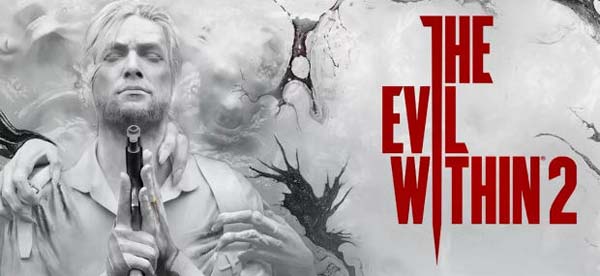
Okay, I said I would give up on Shinji Mikami after the first Evil Within game, but here I am giving that IP a second chance. I had heard that the expansions for Evil Within were actually pretty good, and that they even made the base game better by filling in some of the narrative gaps. But I was so furious with the base game that I sure as hell was not going to shell out more money for DLCs. If they were that integral to the core game, then they should have been included with the core game. Now that my furor over the original has faded a bit, I was hearing that the sequel is also much better than the original game and leans more heavily in the horror camp than the action shooter camp. I was dismissive of the game's announcement, and I was skeptical of the claims that the sequel was actually good, so I picked up a [relatively] cheap used copy off eBay so that I could give it a chance over the Halloween week without necessarily giving any more money to Bethesda.
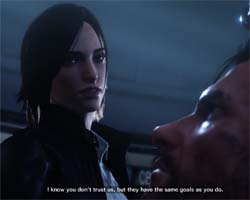
I feel like I missed something...
Maybe I should've played the DLC?
Besides, Shinji Mikami isn't the director this time around. Instead the sequel is directed by John Johanas, who was the director of the [supposedly] good DLC expansion packs. The first game actually did have some good ideas and set pieces within, so maybe a different directorial approach could bring those ideas out to their full potential?
A more focused package
To Johanas' credit, the game, as a whole, definitely has a more "unified" presentation. The first game felt very scattershot with regard to how it wanted the player to play. It's early chapters (which were also the most enjoyable parts of the game) were focused mostly on stealth, with a few pursuit and escape moments thrown in. It was slow, somewhat atmospheric, and built incredible tension. But those mechanics were quickly dropped in favor of shooting gallery set pieces, constant scripted ambushes, set piece boss encounters, and frantic, funhouse-ish trap / puzzle rooms. The sequel, thankfully, is much more focused. I didn't feel like I was wasting my resources by putting points into Sebastian's stealth skills (a skill tree that was completely absent from the previous game), as you can actually continue to use them over the course of the entire game. Sure, there's still scripted ambushes and puzzle rooms, but the focus is much more firmly planted in sneaking around, exploring the environments, and generally avoiding detection.
Unfortunately, there's still a bit too much of a focus on frenzied action. It detracts significantly from any sort of horror or tension that the game might be trying to build up. The autosaves are fairly generous (even though there are also manual save points in each of the game's safe houses), so enemies come in hordes, hit very hard, and deaths are going to happen. Chapter 3 basically completely desensitized me to death and put me in the habit of just standing up and letting the monsters kill me if I ever screwed up the stealth.
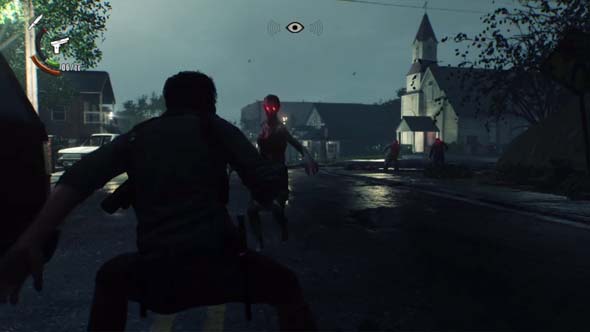
The early combat encounters are not gentle, as they put you up against hordes of enemies.
There's a greater focus on open-ended exploration this time around, and Chapter 3 is the first open map that the player is free to explore. There's basically two main paths through it: the hard one and the easy one. The easy path is basically a straight line due north from where you start, but the game throws some curveball objectives at you that basically encourage you to try the other paths that end up being much harder. You're told about weapon caches and NPCs that you're supposed to try to save. One such weapon is the crossbow, which is actually a pretty necessary tool (because, you know, every game has to have a crossbow). It's right off to the side of where you start, but picking it up can easily lead you down a much harder path to your actual mission objective... [More]
a80e28ec-25a4-48ed-8bdc-50264cab70ac|1|4.0
Tags:The Evil Within, The Evil Within 2, Bethesda, Tango Gameworks, survival horror, horror, action, shooter, open world, sandbox, stealth, zombies, mental institution, virtual reality, psychopath, Sebastian Castellanos, eBay, John Johanas, Shinji Mikami, Resident Evil, Silent Hill
|

| 12 | | | | | | | 60 | | 11 | | | | | | | 55 | | 10 | | | | | | | 50 | | 09 | | | | | | | 45 | | 08 | | | | | | | 40 | | 07 | | | | | | | 35 | | 06 | | | | | | | 30 | | 05 | | | | | | | 25 | | 04 | | | | | | | 20 | | 03 | | | | | | | 15 | | 02 | | | | | | | 10 | | 01 | | | | | | | 05 |
|